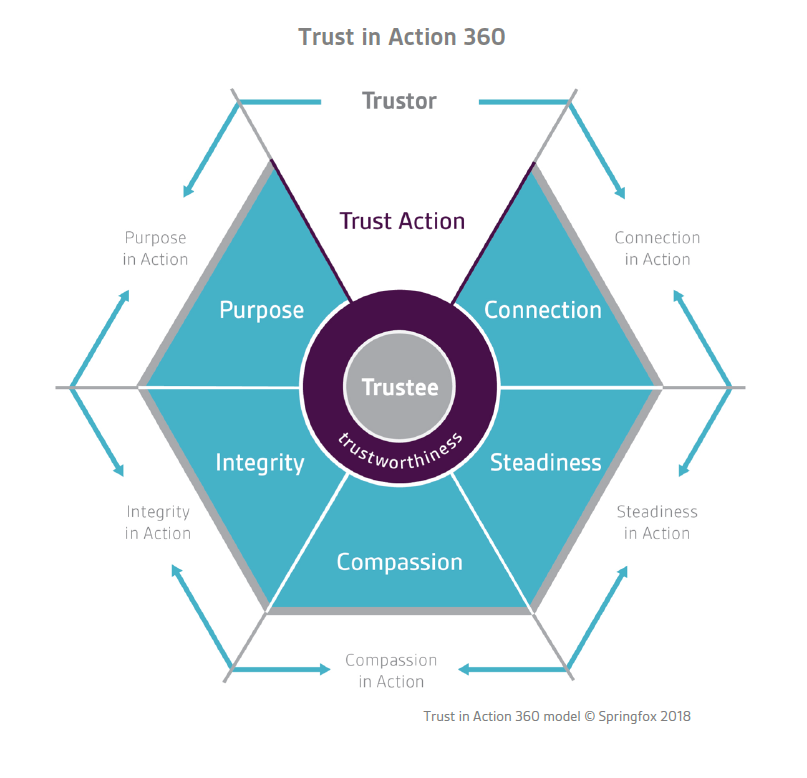
Companies seem to have low levels of trust in the workplace – how can HR remedy this?

A lack of trust in the workplace can create an unmotivated and disengaged workforce where staff feel disempowered and even psychologically unsafe – particularly if they are fearful about voicing their honest opinions.
A 2018 study by Edelman Trust Barometer found that “organisations sit very high in distrustor territory.” Even despite this disturbing finding, HR departments should be doing everything they can to build up and sustain trusting work environments which are above and beyond one-off mental health initiatives and staff morning teas. A workplace where employees feel valued, psychologically safe and nurtured is one where there will be more productivity and better staff retention over the longer term.
HRD interviewed Springfox Founder and CEO, Stuart Taylor, to discuss the findings of their recent survey and what it means for employers and HR leaders. In our discussion, Taylor spoke about the importance of trust in the workplace, why it’s essential for business success and different ways that leaders can look inward to analyse and change their own behaviour to become role models for their teams.

HRD started by asking Stuart Taylor in what ways can business leaders start to reflect upon their own thinking patterns so that they model behaviours likely to build trust within teams? Taylor said that the starting point for CEOs and leaders was demonstrate consistency with their own values and authenticity.
He also said that “The second element here would be around getting much better at catching, checking and changing your thoughts. I know this is a pretty key part of our work with executives, is during their day, particularly on topics or challenges, can I get better at catch, check and change, such that the way that I am communicating is supportive of building trust, every word that comes out of CEOs mouth can be a problem, or it can be an opportunity.”
He also noted that CEOs must be “walking the talk” and this means being more conscious about their decision-making, statements and how that all links back to organisational purpose.
Read more: How to rebuild employee trust in the modern workplace
One of the earlier Springfox whitepapers on the issue of trust in the workplace: “Trust for leaders: building trust within teams and organisations” defined trust as:
“The extent to which one is willing to ascribe good intentions to and have confidence in the actions of another, particularly positive expectations regarding another’s conduct in a context of personal or professional risk.” (Dietz & Hartoz, 2006 – cited by Springfox).
This whitepaper found three elements which are crucial to the trust process:
Springfox then extrapolated those findings into the following 360 model which look at the interplay between trust actions and the values of connection, steadiness, compassion, integrity and purpose.

Taylor went on to explain why they developed this particular model, and he says that trust starts with asking the question “did the manager tell the truth?”. He says that truth-telling is just one out of many other factors. HRD asked Taylor to explain more about the three essential behaviours including honest communications, care from others and transparency and what that might look like in a practical sense in the workplace.
Taylor framed his answer in quite simple terms, saying that “If you are a CEO, who is struggling on the trust front…one of the biggest issues will be around transparency.” He says that this doesn’t mean that leaders and CEOs must share all everything with their staff. Instead, he says that it’s okay for a CEO to start by being transparent and tell their teams “Here's what I can share with you. And I'm going to share that with you right now.”
Transparency and by operating with care and compassion for the people in your teams is key. Taylor explains this further by saying that compassion and care is crucial and for organisations to learn ways to operate with sympathy towards their staff – particularly those who may be struggling with personal or work issues. He says that “How do I act in that situation and reach out to them and provide a sense of support, which I think is so key for HR directors as well. I find myself, you know, perhaps attempting to save the individual who really is struggling more generally. So, I think the balancing act for a CEO or a HR director around acting with care and compassion is not straightforward, but it really is, in my view, what underpins trust in organization.”
HRD asked Taylor to tell us a bit more about the findings of the COVID-19 survey which found that changing working arrangements during the pandemic - to working from home and hybrid arrangements caused many workers to overcompensate and become hyper engaged in the workplace. We asked what he would advise to a HR manager who saw that their staff was not taking enough time to disconnect from the workplace.
The Springfox CEO explained that workplaces are now seeing “the consequences of that hypervigilance, with people just being fatigued, anguishing and struggling to be motivated to get moving. And so, for that manager that you call out, I think there's so many practical things that they can be doing. Number one, is making sure my people know that it's okay, to actually not be fully focused the whole time, actually, okay. And how do I do that, as a manager, I switch off, you know, five times a day, I go for a walk around the park. So, it could be quite practical things that that manager can be sharing.”
He also advises HR managers to encourage their staff not to be online or connected to work any longer than is absolutely necessary. He says that HR managers should be advising their staff about their break entitlements and insisting that they take those breaks. He told HRD that “the human brain can only handle so much engagement, before it needs a break”. He identified a period of around 90 minutes of sustained worker focus – after that breaks should be taken even for a short while. A final piece of advice he offers is that HR managers make sure they check in with their staff members regularly – particularly if they can see a team member who’s struggling.
“The last point I would make is, is the critical role of that leader to demonstrate compassion and empathy when trying to match that staff member’s performance with how they are traveling as a human being. And often that's missed.” Taylor said.
HR leaders wanting to know more about building meaningful trust in the workplace may also be interested in checking out two additional Springfox whitepapers on this important topic:
Agile and successful HR managers understand the importance of treating their staff with compassion and care and also empathy. This goes a long way to ensuring not only greater productivity in the workplace but also enhances trust among teams.
Read more: Why trust is important in the workplace